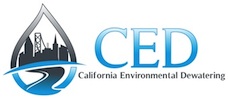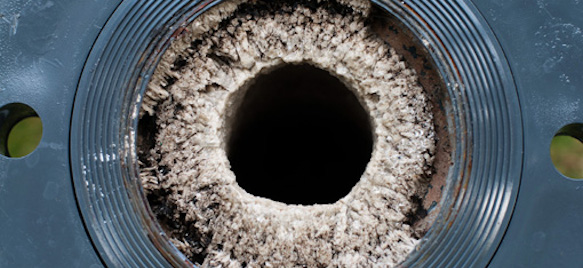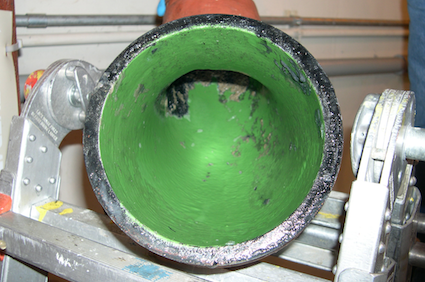CED Struvite Remover
CED Struvite Remover is the most effective Struvite Remover on the market. It is a biodegradable non-corrosive organic acid that quickly and efficiently dissolves many types of scale. CED Struvite Remover effectively dissolves Struvite, Vivianite, Calcium Carbonate, and other dense mineral scales. It is safe to use on all equipment including pumps, aerators, heat exchangers, digesters, belt press hydraulic rollers, internal and external surfaces of centrifuges, and screwpress screens and augers.
How to Remove Struvite
Quantity of Struvite Remover being used will be determined by the size of the pipe being treated and the amount of Struvite. The types of treatment are Static Soaking or Recirculation (preferred method). Static Soaking takes a minimum of 24 hours and Recirculation takes 2-24 hours. Product application rate for Struvite Removal is 1.5-2lbs of product per 1lb of Struvite. No hazmat or OSHA compliance training is required.
What is Struvite?
Struvite (magnesium ammonium phosphate hexahydrate), formula: MgNH4PO4.6H2O, is a phosphate mineral that crystallizes as white to yellowish or brownish-white pyramidal crystals. Magnesium can be found in drinking water, ocean water, and certain types of soil. Ammonia is broken down from urea in wastewater. Phosphate is found in various types of soaps, detergents, and food. The release of phosphate during anaerobic, high-turbulent conditions causes the digesting sludge to reach a saturated phosphate environment. When the digested sludge is exposed to oxygen and turbulence during the dewatering phase it is stripped of carbon dioxide which results in an elevation in the pH. This causes phosphate precipitation. Struvite is abbreviated as MAP when there is a mole to mole ratio (1:1:1) of magnesium, ammonia, and phosphate.
Common Symptoms of Struvite
Buildup of scale reduces the effectiveness of the pipelines and restricts the flow, leading to more frequent pump failures and reduced plant reliability. Struvite accumulation typically occurs in spots with local turbulence, such as pipe elbows, mixer blades, and pumps. Common symptoms of scale are:
- Can physically see struvite crystallization on plant pipeline
- The flow slows down or is restricted
- An increase in pipeline pressure
- Pipelines vibrating, rattling, or shaking due to restricted flow
- Digester overflow box backing up
- A drop in dewatering cake percentage
- Can physically see struvite crystallization on external surfaces of centrifuge
Where does Struvite Form?
Struvite accumulation occurs within:
- Pumps
- Aerators
- Valves
- Heat exchangers
- Digesters
- Belt press hydraulic rollers, drain pans, and filtrate lines
- Internal and external surfaces of centrifuges
- Screwpress screens and augers
Current Treatment Methods Aren’t Sustainable
Current methods of Struvite Removal are hydro-jetting with high pressure streams of water, mechanically grinding pipe walls, replacement of pipelines, and highly corrosive chemicals. The disadvantages of these methods are: they require a lengthy suspension of normal treatment operations. Many pipelines and valves are underground or are inaccessible for mechanical removal. Corrosive chemicals cause damage to glass lining of piping and can upset the biologics in the wastewater system.





